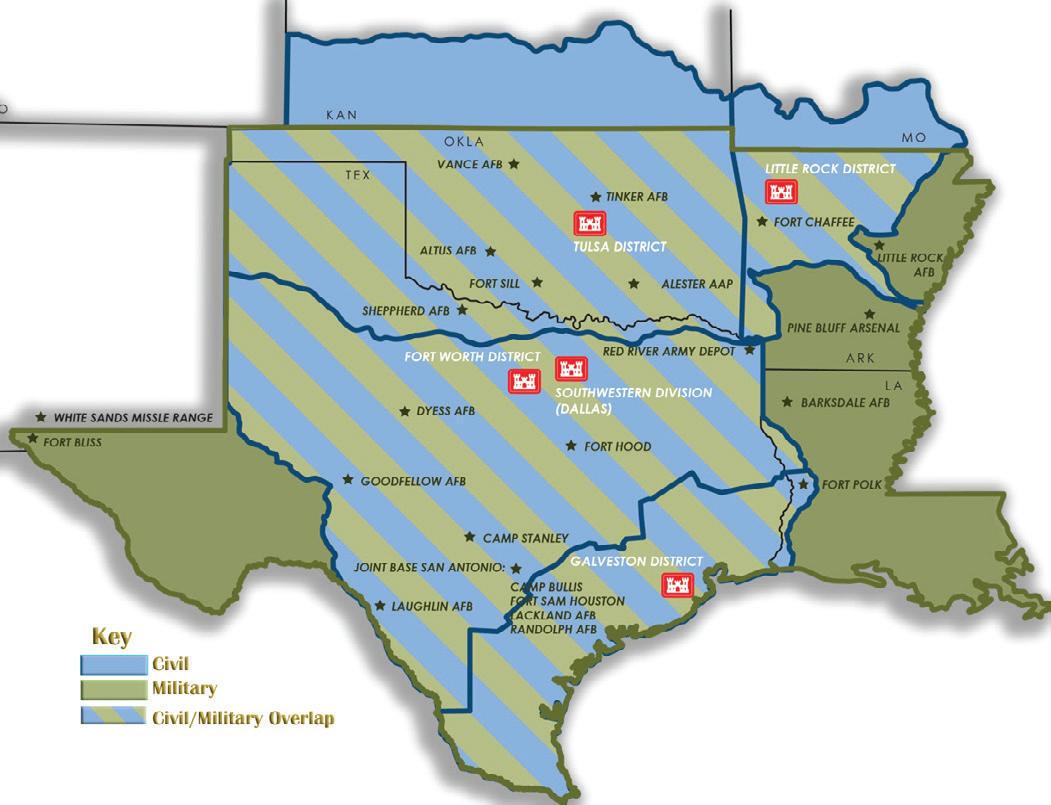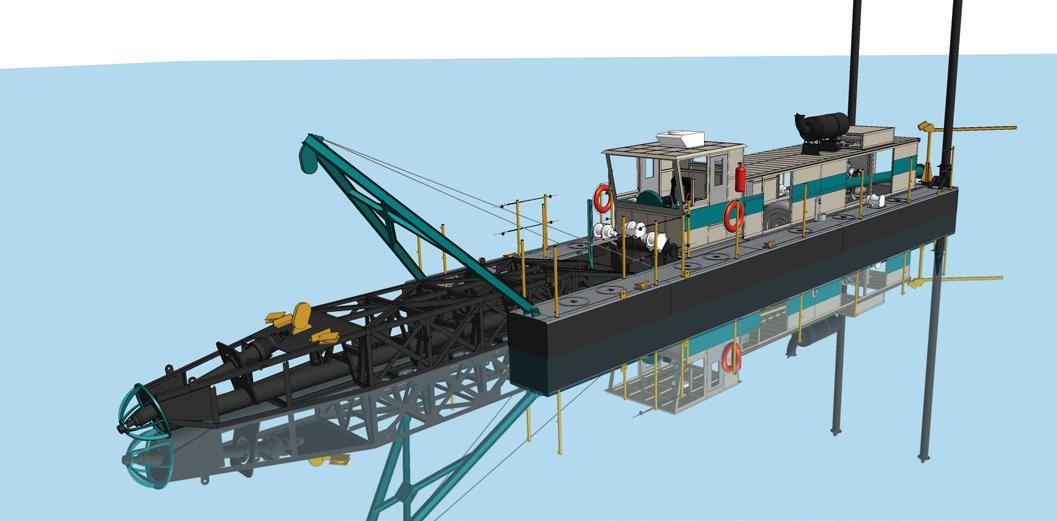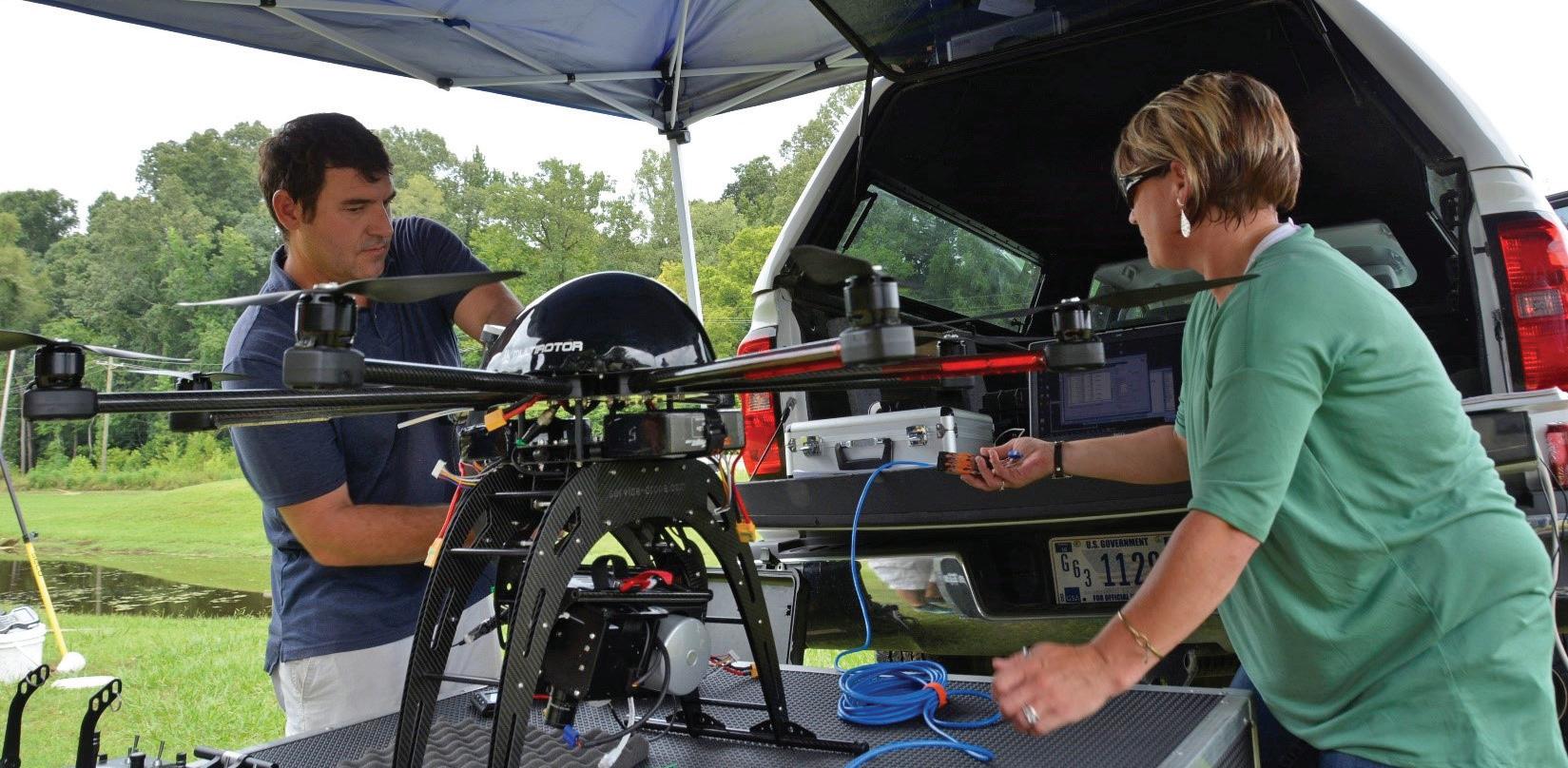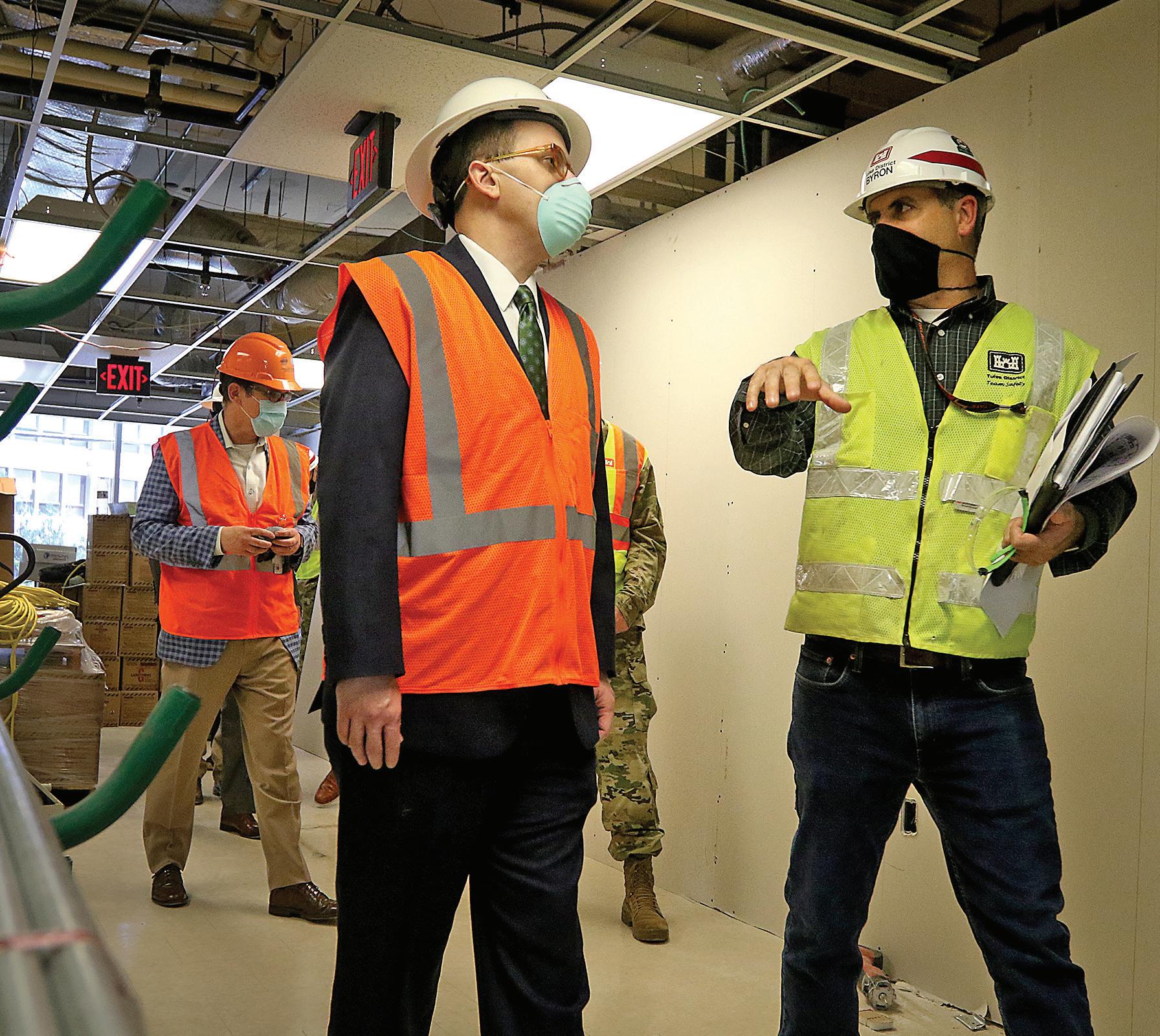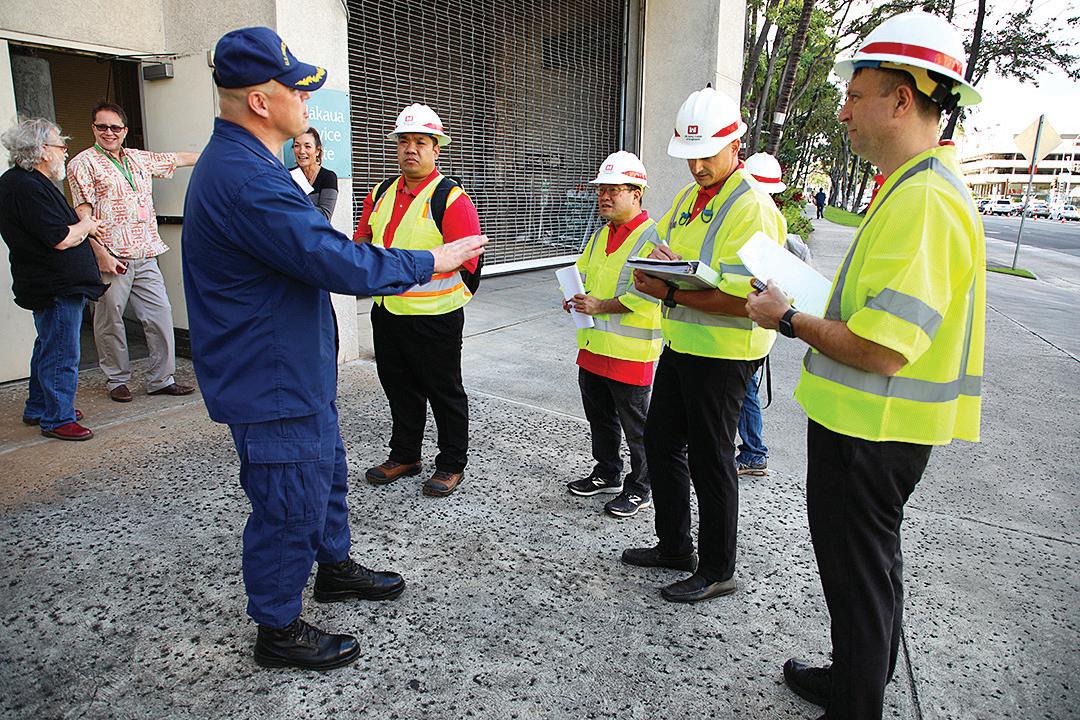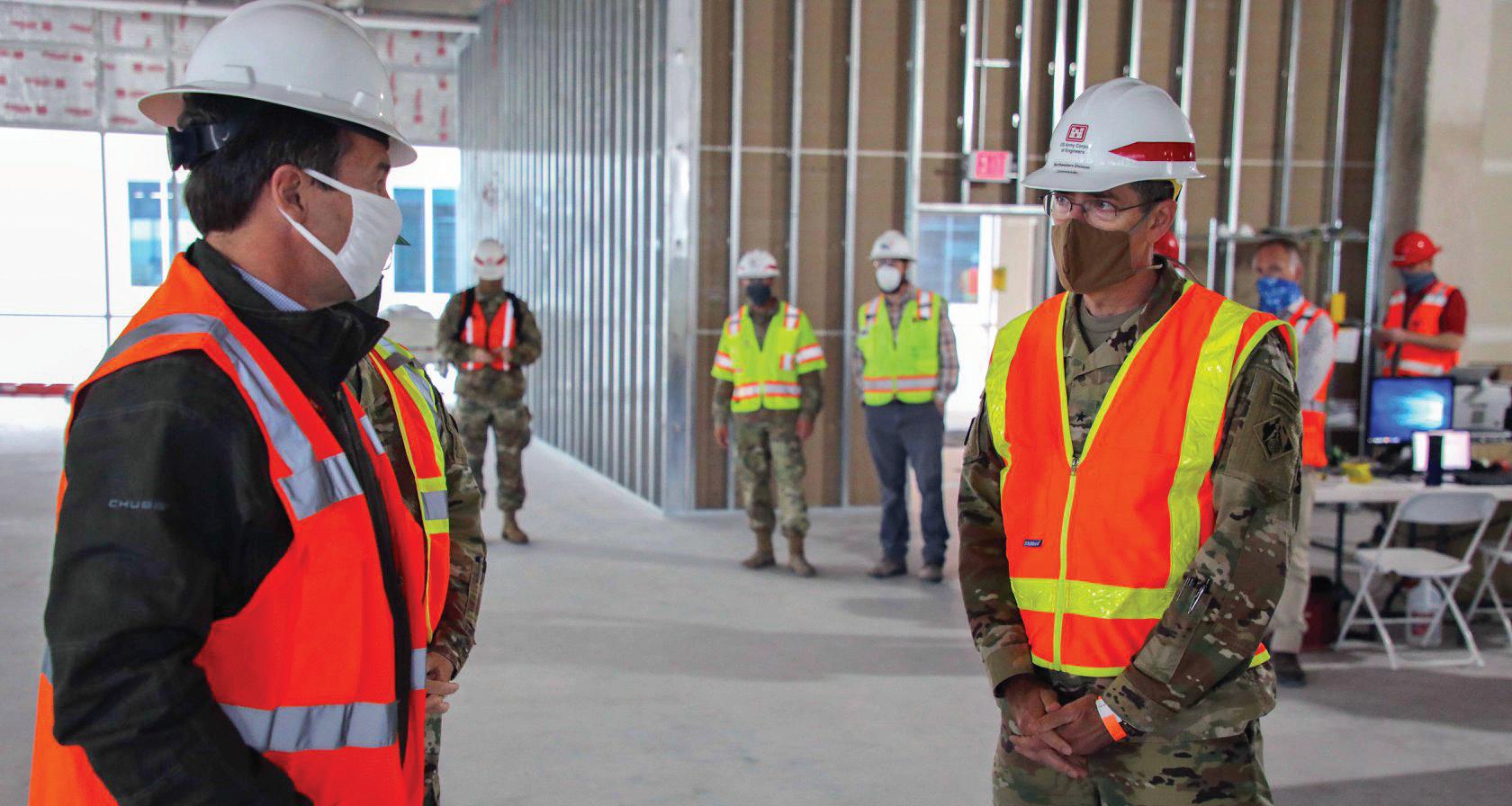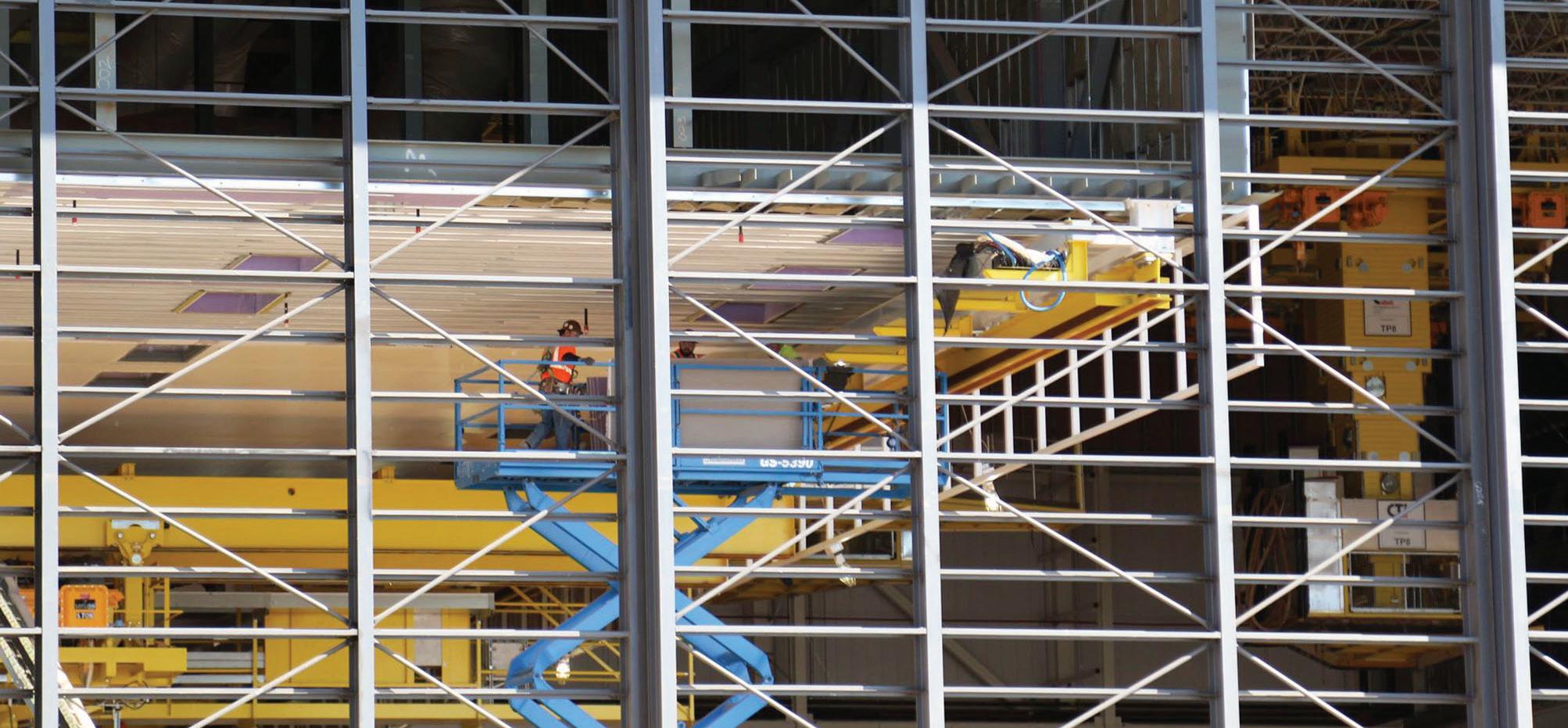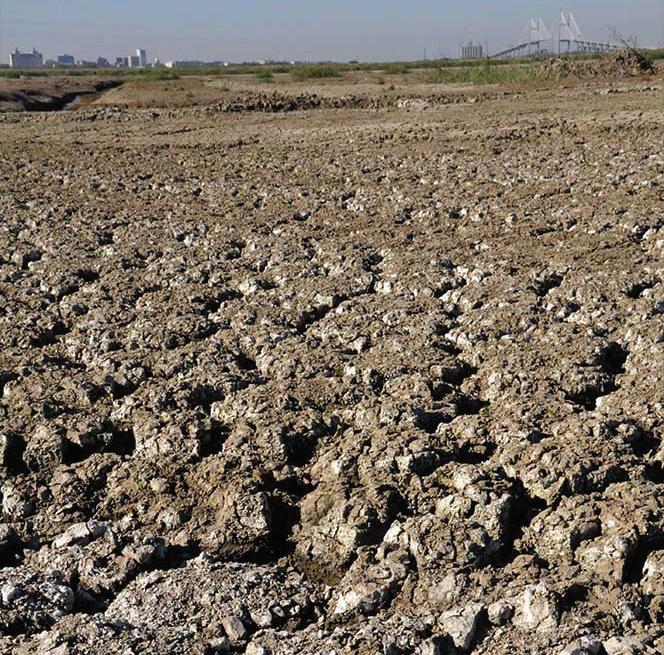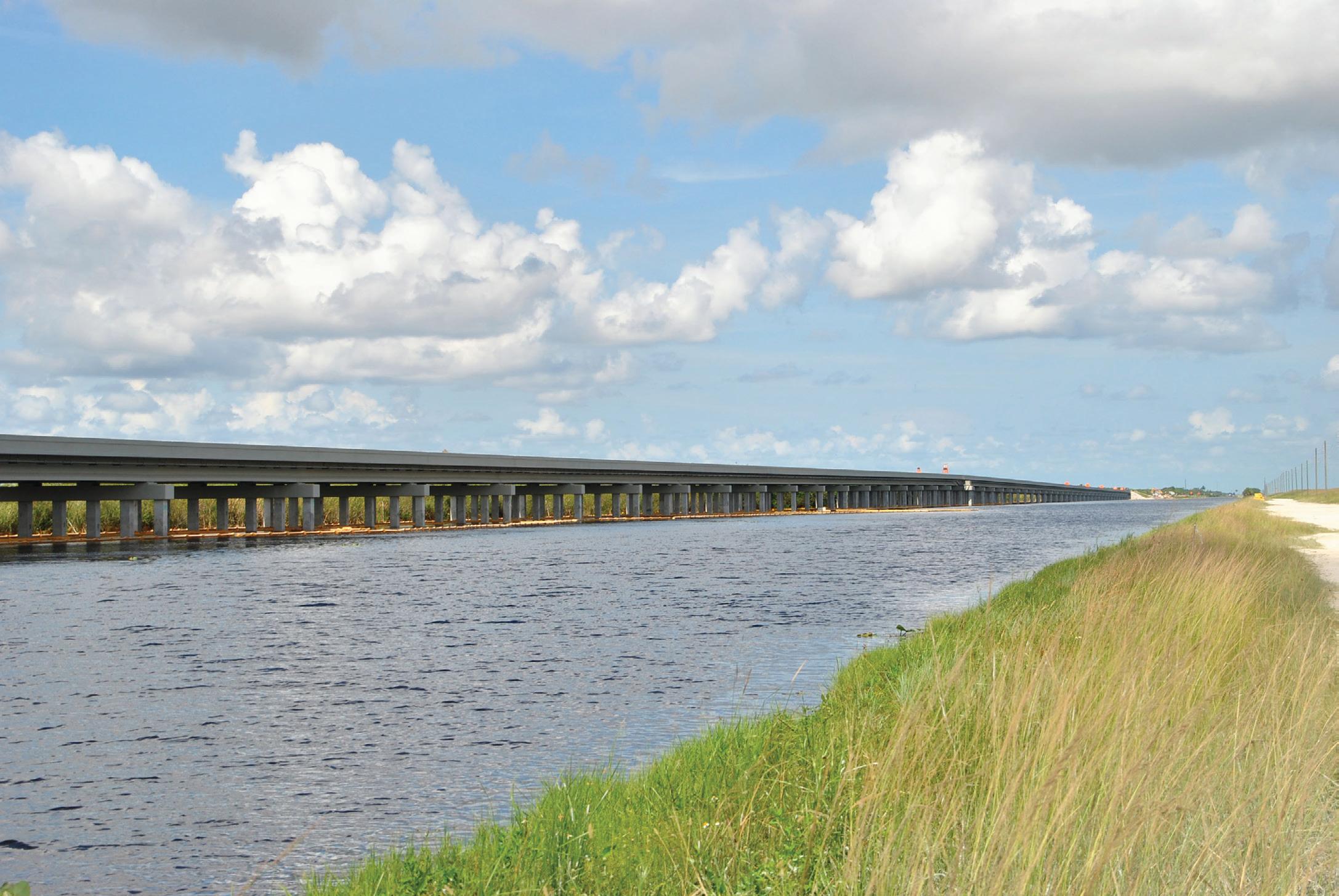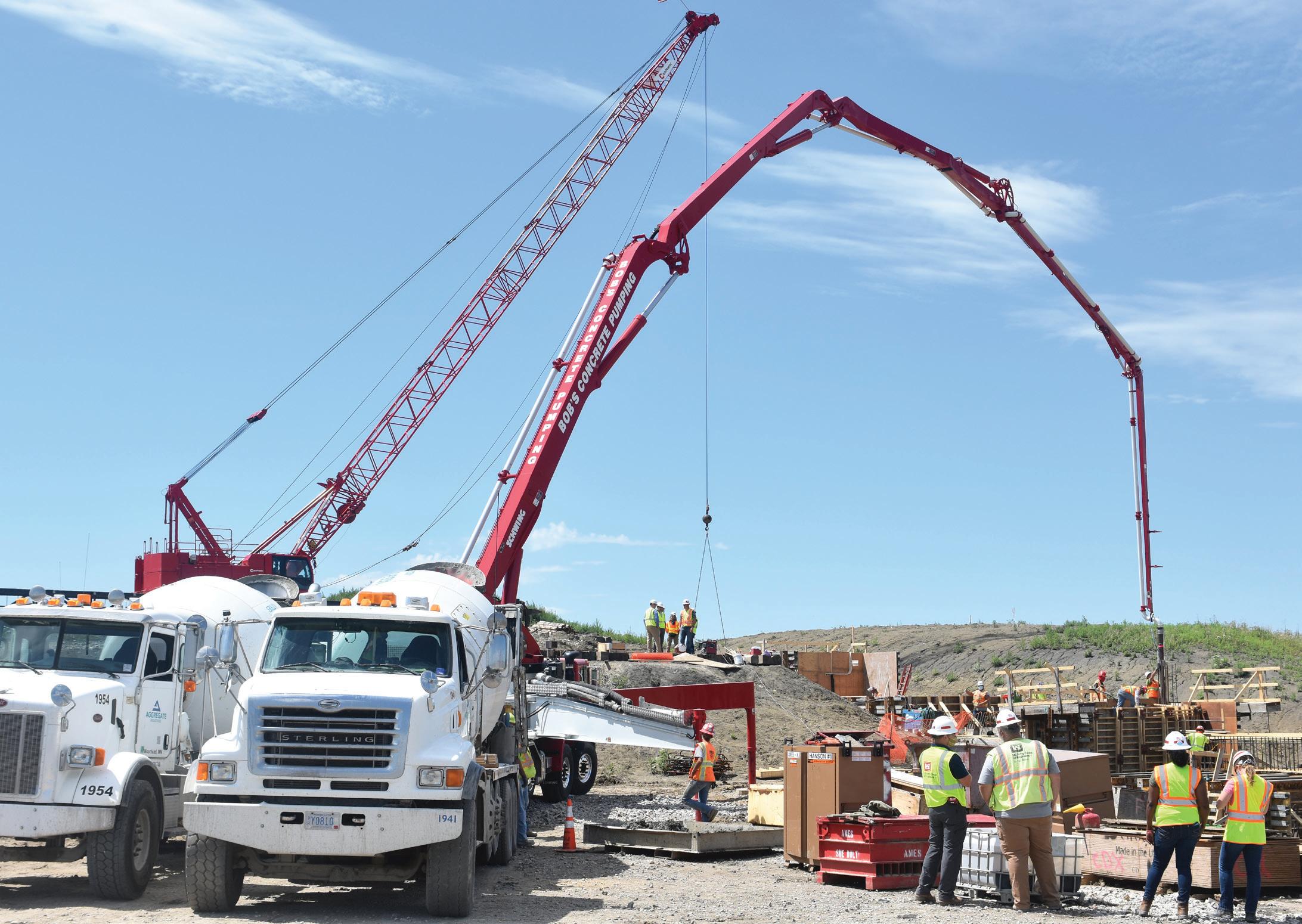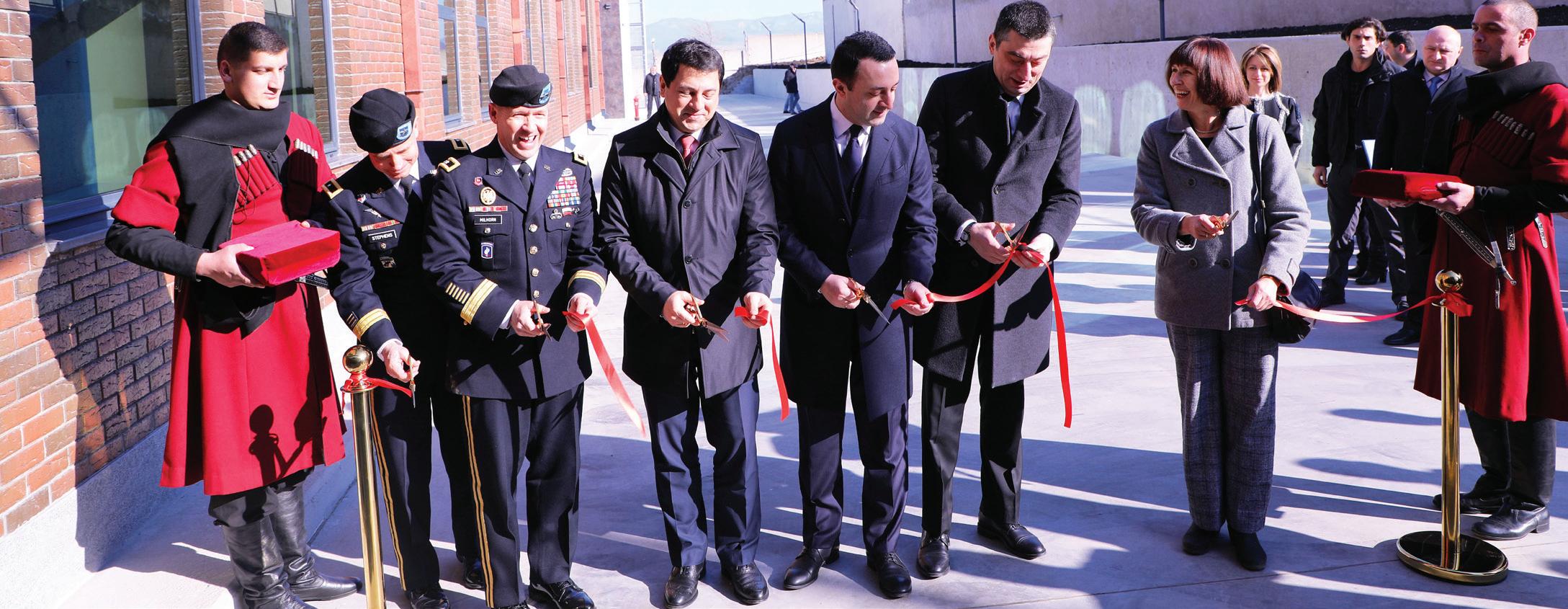U.S. ARMY ENGINEER RESEARCH AND DEVELOPMENT CENTER 3909 Halls Ferry Rd. Vicksburg, MS 39180-6199 (601) 636-3111 ERDCinfo@usace.army.mil www.erdc.usace.army.mil Facebook / Instagram / LinkedIn / Twitter / YouTube: @ArmyERDC The U.S. Army Corps of Engineers (USACE) has an exceptional R&D capability within its laboratories and centers. The Engineer Research and Development Center (ERDC) is the USACE premier research organization, developing innovative solutions and products that help solve the nation’s toughest engineering and environmental challenges in support of USACE’s key mission areas. ERDC is headquartered in Vicksburg, Mississippi, along with four of its seven laboratories: the Coastal and Hydraulics; Geotechnical and Structures; Environmental;
and Information Technology laboratories. Additional laboratories include the Construction Engineering Research Laboratory in Champaign, Illinois; Cold Regions Research and Engineering Laboratory in Hanover, New Hampshire; and the Geospatial Research Laboratory in Alexandria, Virginia. ERDC uses state-of-the-art facilities, coupled with some of the world’s top engineers and scientists, to conduct research in unique competency areas for the Department of Defense (DOD) and the nation. These core competency areas include: • Civil and military engineering • Blast and weapons effects on structures and geo-materials • Battlespace terrain mapping and characterization • Cold regions science and engineering • Coastal, river, and environmental engineering • Military installations and infrastructure • Computational prototyping of military platforms In addition to USACE and DOD, ERDC conducts research for other federal agencies, state and municipal authorities, and with U.S. industries through innovative work agreements. ERDC discovers, develops, and delivers new ways to make the world safer and better every day.
ERDC ANSWERS THE COVID-19 CALL BY MARY MARGARE T EDNE Y AND HOLLY KUZMITSKI
T
he U.S. Army Engineer Research and Development Center (ERDC) is no stranger to tackling the nation’s toughest problems – it’s even inscribed in the command’s mission statement. So, when COVID-19 cases struck the United States, ERDC scientists, engineers, and even tradesmen were quick to respond with innovative solutions to aid the pandemic response. As leaders across the country faced the potential of overwhelmed hospital systems, the U.S. Army Corps of Engineers (USACE) stepped up to aid local, city, and state partners in developing alternate care facilities (ACFs) to handle a surge of patients. In the early stages of that effort, USACE leadership called on ERDC’s Directorate of Public Works (DPW) – electricians, welders, carpenters, and more – to come up with two makeshift hospital room prototypes. “The call went out, and DPW came running,” ERDC Commander Col. Teresa Schlosser said of the effort. “This project highlights a critical capability that ERDC has amongst our tradesmen. The artisanship they have is amazing and doesn’t get enough credit.” In less than two days, the crew constructed two working containerized medical solutions, one fashioned from a portable
128
storage unit and the other a 12x12 metal-frame room built from the ground up. “They knew this was a call to help our nation,” said Mike Channell, director of the ERDC Installation Support Division, which oversees DPW. “ERDC innovates on the fly, that’s what we do.” While the tradesmen were hammering away at the mock-up hospital rooms, researchers in the ERDC Information Technology Laboratory (ITL) were using cutting-edge technology to make the ACF process a little safer for their peers throughout USACE. One of the first steps in standing up an ACF is conducting an assessment of the possible hospital site. Often, that means sending in teams of USACE subject-matter experts to examine the buildings in person. However, during a pandemic, where more people gathering could mean an increased spread of coronavirus, the ERDC-ITL team realized it was time to introduce a safer, virtual option: augmented reality. Using live-streaming and mixed-reality overlays, a smaller group of engineers on site could share their findings with the larger group of subject-matter experts who worked remotely and wouldn’t have to set foot in the building.

